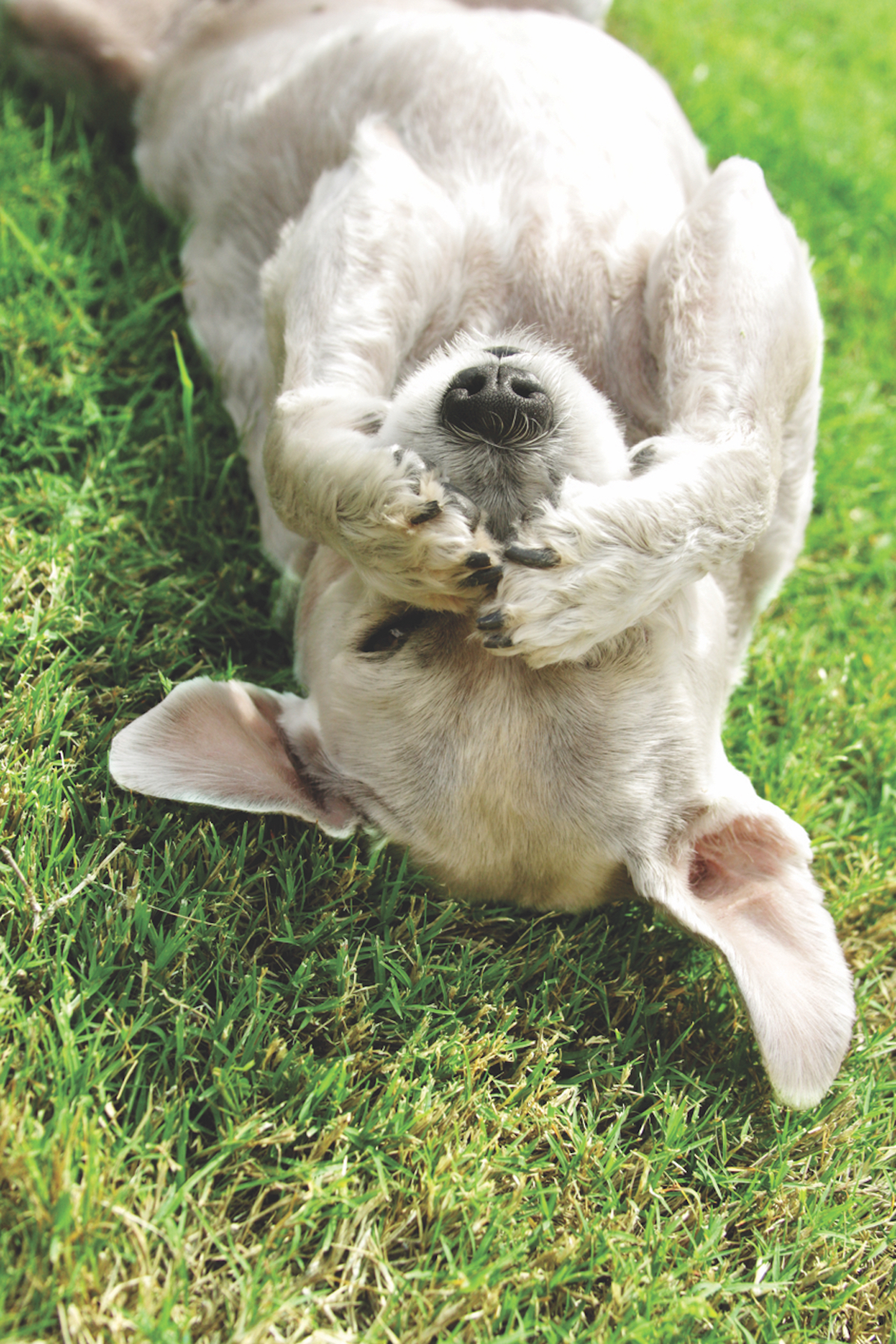By Tracie Korol
Like many doggy behaviors we humans find annoying, inconvenient or embarrassing, mounting (“humping”) is a perfectly normal canine behavior. And like other annoying, inconvenient or embarrassing behaviors, it’s perfectly reasonable to be able to tell our dogs to stop. Can it be that simple? Sometimes.
Occasional mounting of other dogs in canine social interactions can be acceptable as long as it doesn’t lead to bloodshed, crushing a neighbor’s tiny dog or total oppression of the mountee. However, the longer the dog has practiced his humping skills, the harder it is to change. Logically, the sooner you intervene in your dog’s unacceptable mounting, the better your chances for behavior modification success.
Neutering is an obvious first step. A 1976 study (Journal of the American Veterinary Medical Association, JAVMA) found an 80% decrease in mounting behavior following neutering. (Mounting is far more a male dog behavior than female.) The same study determined that within 72 hours of surgery, the bulk of the hormones leave the dog’s system. As mounting behavior is partially a learned behavior as well as hormone-driven, the extent to which neutering will have a positive effect depends on how long the dog has been allowed to hump at liberty. I am all for having dogs neutered as soon as the presiding vet deems it medically viable. It not only moves you into the ranks of Responsible Pet Owners, but it makes it easier to modify unwanted behavior before it becomes a habit.
Good Manners training is also of benefit when dealing with a happy humper. If a dog is trained to respond promptly to cues — sit, leave it, go to your place — simply asking for an incompatible behavior will squelch a mount before it begins. If you see your dog get that goony-eyed stare when a dog friend comes to play, you can divert him to his rug with the “go to your place” cue or instruct him to sit. (Reward lavishly when he does.) This technique will be effective if you work with your dog on a daily basis, reminding him daily that he is a guest in your house. So many owners will trot their pets to puppy class and rarely, if ever, review.
If, during a play date, as excitement and activity builds, a cue may not be enough to divert the humper. In that case, try a subtle body block. Every time your dog approaches the other with obvious mounting posture, step calmly in front of your dog to block him. If you’re skilled and have a tight relationship with your Best Friend, you might be able to simply lean your body forward or thrust out a hip or knee to let him know the fun’s about to stop. Or, if your dog is on lead you can cheerfully announce “time out!” and lead your dog out of the area of activity. Sit with him until the arousal level has diminished and then release him back to the game.
Keep in mind, the earlier you intervene in the sequence, the more effective the intervention as your dog has had less time to become fully engaged in the behavior. It’s also important that you stay calm and cheerful during the modification process. Yelling or physically correcting your dog increases the stress level in the environment and may set up a condition where a fight could occur.
For your average run-of-the-mill human mounting, simply get up and walk away. Or clue your guests before their visit that if Charlie gets frisky it would be to their benefit to not respond, but simply move away from the impending action. Explain that Charlie does not have a romantic crush, that it is not sexual behavior, but attention-seeking and anything they try to do to talk Charlie out of it will only reinforce the behavior, or make it worse. You can use a light line (I like a length of clothesline rope) to help extricate your friends from your dog’s embrace while announcing cheerfully, “time out!”
Dog owners are often surprised to discover that some dogs masturbate, neutered or not. There’s no harm in it, as long as the objects used are washable — his personal stuffed bear as opposed your couch cushion — and it doesn’t become obsessive. Again, removing an inappropriate object or resorting to time outs can re-direct behavior to objects that are more acceptable.
As with many unwanted dog behaviors, some time spent learning positive rewards based training will pay off in spades, and you will change the undesired behavior. Making use of basic training cues and distraction — get the ball!, squeak the squeaky toy or simply moving to a different room can diffuse a situation with kindness and as always, with humor.






